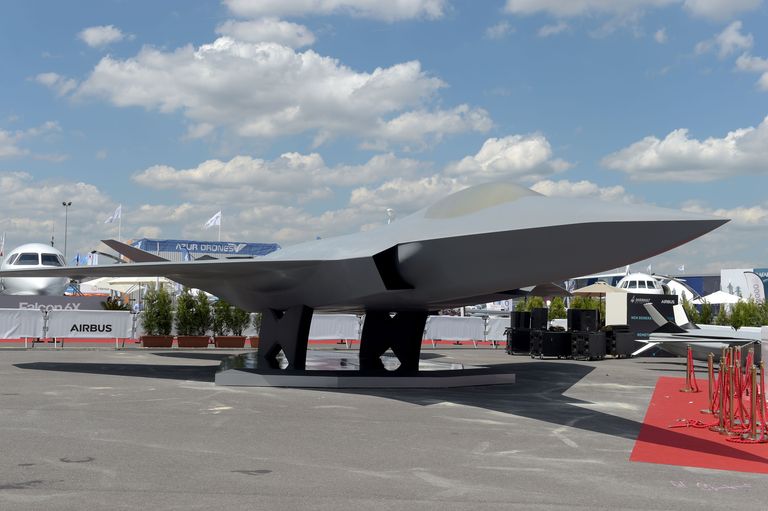France and Germany are negotiating on the next step in the development of the 6th-generation fighter aircraft. The Government in Berlin said last month.
The next-generation Franco-German Combat Aircraft and drones will be developed under the Future Combat Air System (FCAS) program.
The FCAS is a key instrument in ensuring future European autonomy and sovereignty in defense and security. It will further strengthen Europe as an industry and technology hotspot, not just in the defense sector, but with important spill-overs into the civilian world. Airbus reported.
Follow us on Google News to get the latest defense news and analysis
FCAS project details:
The first step regarding the FCAS was taken by the German Chancellor Markel and French President Macron in 2017 to develop a joint European Air Defense System of the next-generation.
In February 2019, France and Germany signed an agreement formally stated as ‘Joint Concept Study’ (JCS) which is considered as a milestone and the very first transnational contract for the FCAS. The work begins with a volume of 65 million euros for a duration of 2 years.
In May 2019, Spain officially joined the FCAS program during the Paris Airshow at Le Bourget. While in February 2020, France and Germany signed the 155 million euros agreement for the ‘Phase 1A’ of the project which aims at the beginning of technology development and maturation for an FCAS.
Now the next level of the project ‘Phase 1B’ begins which involves the full integration of the Spanish industry in FCAS.
British military not fully fit for fight, Former Army Chief
The total cost of the FCAS program is estimated at around $120 billion. The project will include crewed and uncrewed systems.
The FCAS program aims to develop a family of air systems which will work together to generate next-generation combat air capabilities. The main components of the FCAS identified so far are a piloted fighter as the core air vehicle, with additional UAVs, and an advanced ‘combat cloud’ network to ensure connectivity in combat. According to RUSI, a research-led institution.
RUSI further said in a report that there are also some disagreements between the partner countries on industrial workshare, operational priorities, and the relationship of the FCAS project to other joint endeavors such as an upgrade program for the Tiger gunship helicopter.
The major companies involved in the FCAS next-generation fighter jet program are Dassault Aviation from France and Airbus from a European multinational aerospace corporation.
US Army, Argonne scientists discover nanoparticles for future weapon systems
France has a very rich experience in designing and manufacturing fighters from Dassault Aviation, including its most successful line of Mirage jets and the current Rafale fighter. While Germany and Spain, have less experience, having only worked on the Eurofighter.
The new 6th-generation fighter aircraft would take to the skies by 2040. The prototype will be completed in 2026. The new aircraft would replace the fleet of Dassault Rafale and Eurofighter Typhoon jets in the air forces of the project partner countries.
Analysis:
It is a great step from the European countries, France and Germany to take early initiative for their next-generation fighter jet. It will surely help them to be the leader of the next-generation fighter jet technology in the future.
The FCAS program was started back in 2017 and will be completed in 2040. It’s a long time to manufacture the next-generation aircraft. On the other hand, the US Air Force is already working on a way to speed up the development of new technologies. Using a new Stardrive digital engineering process, the USAF will be able to design, build, and fly the all-new fighter jets in as little as one year.
The European FCAS project should take benefit from the United States digital engineering process to complete the project in a shorter time period.


